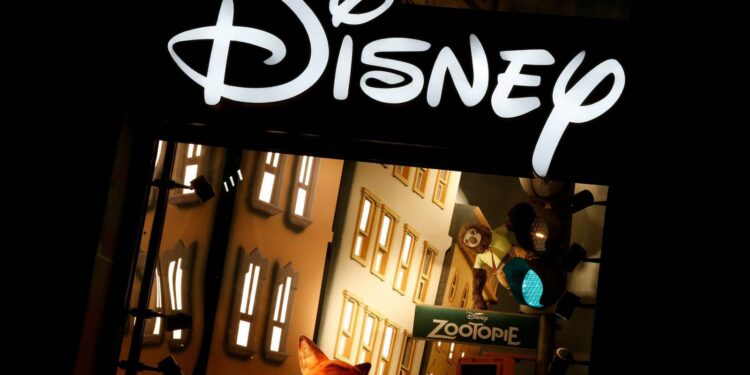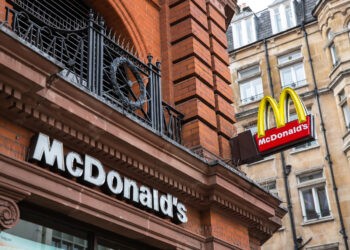Agencies-Gaza post
Disney increases the streaming price, presents plans with ads
Walt Disney shares climbed after the company reported better-than-expected subscriber development for its streaming service in the third quarter and stated it would raise the price of Disney+ by 38 percent, part of a program to generate more income from the money-losing online business.
On December 8th, Disney will present an ad-supported version of the flagship streaming service and raise the price of the ad-free choice to $11 a month, the entertainment giant said Wednesday. Prices for some boxes that include Hulu and ESPN+ will also rise.
The price rises, subscriber earnings, and a strong third-quarter commission from Disney’s namesake theme parks may help change investor sentiment that sent the shares down 27 percent this year through Wednesday’s close. The company added 14.4 million new Disney+ subscribers in the quarter, beating analysts’ appraisals of 9.8 million and bucking the downdraft that’s hit Netflix.
While Disney “shares have underperformed, the business has stayed to outperform, analysts at Morgan Stanley wrote in a note following the consequences.
Disney shares climbed 7.6 percent in early trading before markets opened in New York. The stock climbed 4 percent to close at $112.43 on Wednesday.
Still, many critics have been skeptical that Disney could meet the ambitious fiscal 2024 mark for up to 260 million subscribers that it set two years ago. Chief Financial Officer Christine McCarthy told investors on a call Wednesday that the company now hopes for between 135 million and 165 million “core Disney+ customers and as many as 80 million customers for the Disney+ Hotstar product in India by the end of fiscal 2024, or a maximum of 245 million.
The world’s largest entertainment company, Disney is trying to stem failures in its direct-to-consumer business as it guides a transition from traditional TV viewing to online options. Disney+, launched in November 2019, includes films and TV concerts from the company’s vast library, as well as new series tied to company brands such as Marvel and “Star Wars. The company has said it expects Disney+ to be profitable in fiscal 2024.
The introduction of an ad-supported tier is meant to increase subscribers and generate more revenue by giving clients choices for how much they want to pay for the service. Disney said last month it sold $9 billion of ads for the upcoming TV season, with 40 percent of that going to its online offerings.
Current Disney+ subscribers will start receiving the ad-supported version unless they agree to pay more for the commercial-free plan.
The Burbank, California-based company said fiscal third-quarter sales and earnings that beat analysts’ expectations, driven in part by the strong performance of its theme gardens. Deals in the period ended July 2 jumped 26% to $21.5 billion, led by soaring park revenue and beating analysts’ expectations of $21 billion. Earnings jumped to $1.09 a share excluding some items, topping estimates of 96 cents.
With last quarter’s gain, the total number of Disney+ subscribers has risen to 152.1 million. ESPN+ now has 22.8 million subscribers and Hulu, including live TV, has 46.2 million. Netflix had 220.7 million subscribers at the close of its latest quarter.
Managing losses at the direct-to-consumer business, which includes the streaming services, more than tripled to $1.06 billion as the company continues to invest in new programming and expand to new regions. That was worse than the $697 million analysts expected. Disney expects to spend about $30 billion on programming in the current fiscal year, down about $3 billion from its original goals.
Ken Leon, director of equity research at CFRA, told Bloomberg TV that he stays concerned about losses in the company’s streaming services and its reliance on low-cost subscribers in India. The peaches for him were the company’s TV networks and its theme gardens.
“This was a strong quarter, mostly from the traditional, established businesses, Mr. Leon reported.
Profit in its traditional TV business, which contains the ABC and ESPN networks, rose 13% to $2.47 billion, thanks to higher ad income and fees from cable distributors. Programming costs were flat to down.
Profit at the company’s theme parks, a star in recent months as consumers went on holidays again after two years of the pandemic, rose sixfold to $2.19 billion. US resorts were the main driver, while global parks lost money and consumer products delivered only a modest increase.
The company asserted a 26 percent jump in deals for its film studio to $2.11 billion but suffered a loss of $27 million as the strong performance of Doctor Strange in the Multiverse of Madness in theatres was compensated by lower home-entertainment payment.























